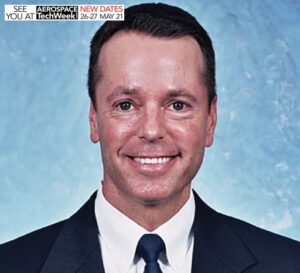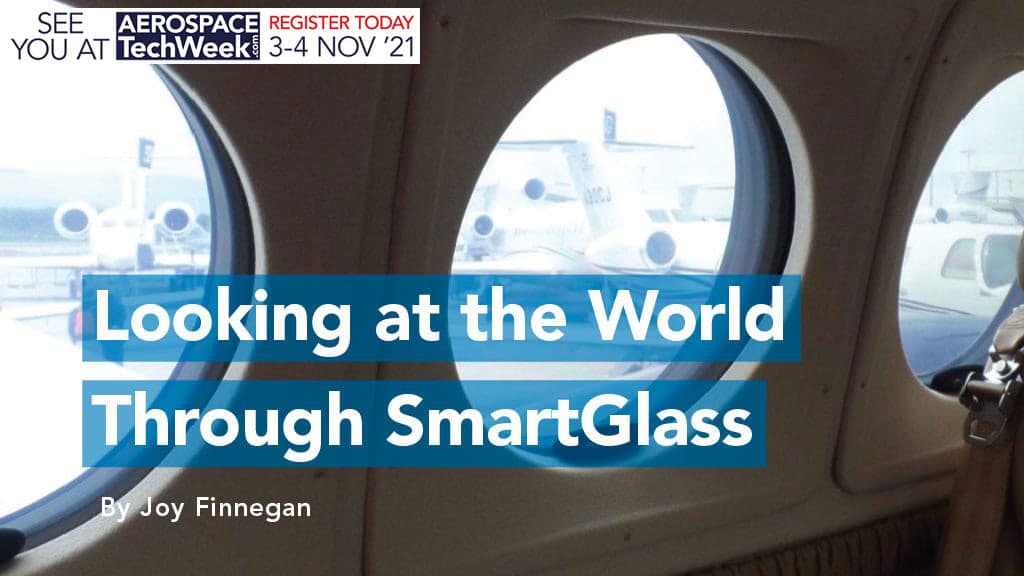The company Research Frontiers developed light-control technology that enables any window, sunroof or skylight to control the transmission of light by electrically aligning nanoparticles in the film. The product is being used in aircraft and business jets like those from Textron, Honda and Epic and can be installed as an aftermarket modification. Aviation Maintenance spoke to the company’s vice president of Aerospace Products, Mike LaPointe to learn about the product and how it came to be.

Vice President of Aerospace Products
Research Frontiers
What is the history of SmartGlass?
The roots of SPD-SmartGlass technology began with Dr. Edwin Land, founder of Polaroid Corporation. Research Frontiers, the developer and licensor of SPD (“Suspended Particle Device”) SmartGlass technology continued the early work done by Dr. Land and others had done in the area of light-control. The industry was built via a licensing business model – through license agreements with over 45 companies around the world, The SPD-SmartGlass industry has a robust supply chain infrastructure to serve the global market.
Why was it developed?
Glass and other types of transparent materials have been highly valued across many applications (e.g. buildings and transportation vehicles) for centuries, enabling people when indoors to continue to enjoy views and maintain their connection to the outside world. The downside to the use of transparent panels is that visible light, glare and heat can become too intense. SPD-SmartGlass provides the solution by enabling users to precisely control and manage these elements.
What industries are already using SmartGlass?
Research Frontiers’ SPD-SmartGlass technology is being used in tens of thousands of cars, aircraft, yachts, trains, homes, offices, museums and other buildings around the world.
How long has it been in use for aviation applications?
The first installation of SPD-Smart EDWs (Electronically Dimmable Windows) on aircraft was in 2001, on a Learjet 25.
You talk about the glass being “tunable” – please explain what that means.
SPD-Smart EDWs on aircraft switch from transparent to over 99 percent light-blocking, and any state of tint in between. This enables the passengers to “tune” the level of tint to any level between clear and dark, by use of any type of switch that can vary the voltage applied to the EDW, similar to a dimmer switch for light bulbs or LEDs.
Is the tunability one extreme or the other – clear or dark or is it adjustable like a rheostat?
It is infinitely tunable. Unlike other types of glass, with the touch of a button passengers can instantly change the tint of SPD-SmartGlass windows onboard aircraft from dark to clear and anywhere in-between. This allows passengers to get the optimum ideal amount of shade or light and to preserve views without the clunky pull down shades that are typically found on most aircraft. Moreover, SPD-SmartGlass windows can be in tuned on a window-by-window basis so that each passenger can get the exact amount of light they are looking for.
Please explain technically how the glass works. Are there any special considerations for aircraft operation?
The foundation of SPD-Smart aircraft EDWs use SPD film enclosed between thin plastic layers. Within this film are microscopic particles. When no electrical voltage is present, the particles absorb light and block it from passing through the film. When an electrical voltage is applied, the particles align so that light can pass through. Adjusting the voltage to the film provides a range of transparencies (i.e. very dark to fully clear) where light transmission can be rapidly varied to any degree desired depending upon preference or pre-programmed requirements. The SPD film is laminated between two layers of substrates (polycarbonate, acrylic, chemically strengthened glass, etc.), and this EDW then sits in a window shroud. Historical installations include a scratch lens inboard of the EDW to protect it, however, recent advancements in chemically strengthened glass demonstrating FAA/EASA compliance offer the SPD-SmartGlass industry the opportunity to have a single panel function not only as the EDW but for the scratch lens as well. The SPD-Smart EDW system is 28Vdc that integrates into the aircraft electrical system.

And the electrical current doesn’t impact any avionics equipment onboard?
That is correct. All components: the SPD-Smart EDW panel, the controller, the master switching unit, the emergency power supply, the control switch, and all of the wiring harnesses have gone through full DO-160 testing to ensure all of the components do not emit any EMI/RFI signals on to existing avionic equipment.
Aircraft pressurization is not an issue?
The SPD-Smart EDW is not a structural window, and is located on the interior side and is non-structural. This panel feels what the passenger feels, so a cabin altitude of 8000 feet or less.
Can SmartGlass be used in any size aircraft window?
Yes, including any shape and on curved panels.
Are these windows FAA/EASA approved now?
Yes, they are both FAA and EASA approved via STC, PMA, and OEM TC.
Are they installed and flying in aircraft now?
Yes, they are standard equipment on new production aircraft including King Air 350i, King Air 250, King Air C90GTx, Honda Aircraft HondaJet, Epic E1000, and others. Including aftermarket installations, SPD-Smart EDWs have been installed on over 50 models of aircraft.
What products are available now for aircraft?
The product is available for passenger windows; cockpit lateral windows; cockpit sun visors; and cabin partitions.
What are the benefits of using SmartGlass in an aircraft?
The overarching benefit of SPD-Smart aircraft EDWs is improving the passenger experience. Passengers and crews can “tune” the amount of light coming into the aircraft cabin, at the touch of a button – to preserve views, reduce unwanted glare, and manage the optimum amount of healthy daylight for passenger well-being. Cabin-wide control of the amount of light and glare entering the aircraft improves the flying experience for all, instantly transforming the cabin interior, and synergistically complementing other systems, such as mood lighting and in-flight entertainment systems. Aircraft windows are a primary path for heat, noise, glare and other environmental elements entering an aircraft through the window opening. These unwanted elements – cabin heat while the aircraft is on the ramp, and cabin noise during the entire flight – are well known to cause passengers discomfort, fatigue, jet lag and other ailments. SPD-SmartEDWs, with their multilayer configuration of films and interlayers, provide all passengers with a cooler, quieter, and more comfortable cabin.
